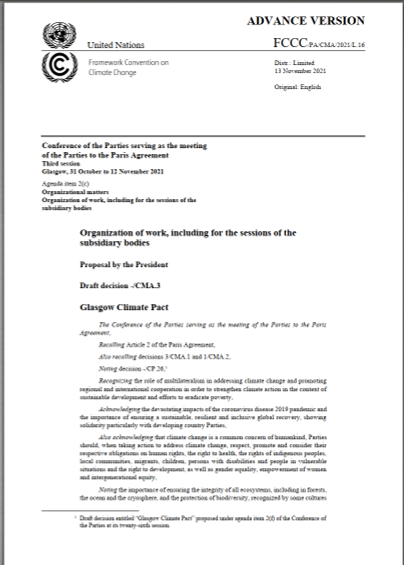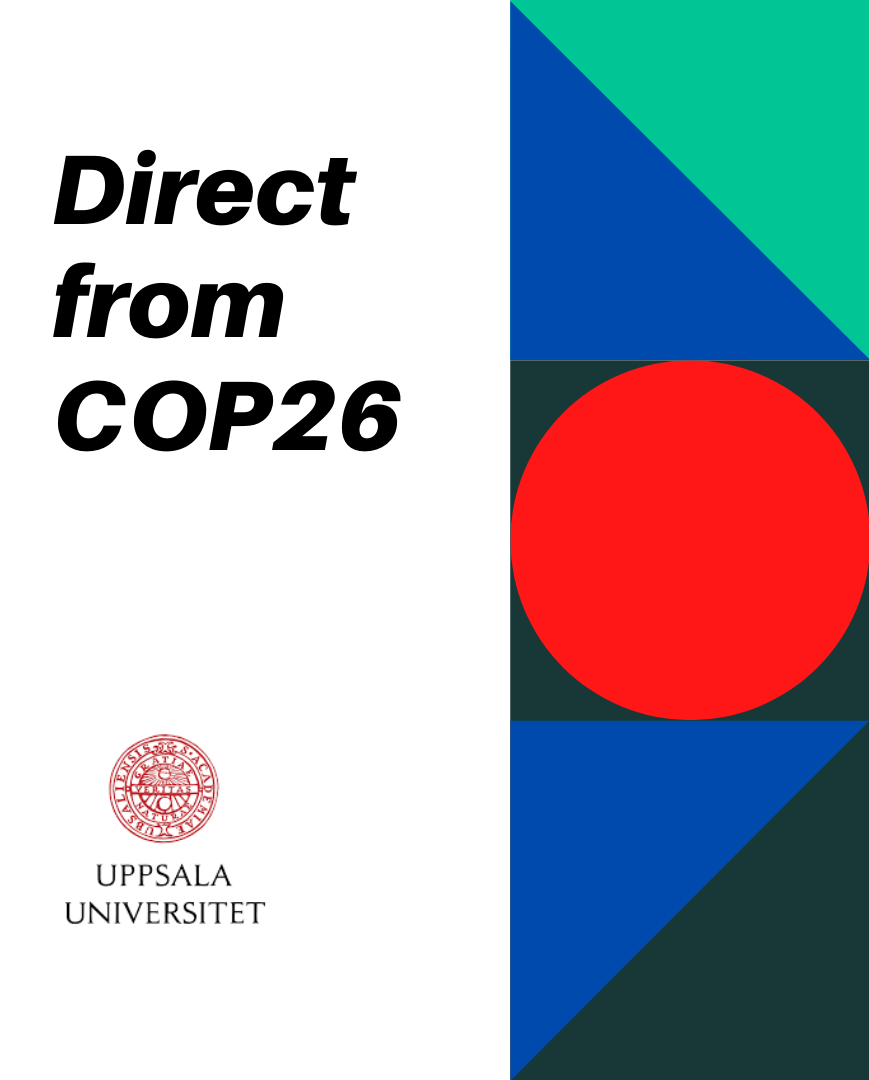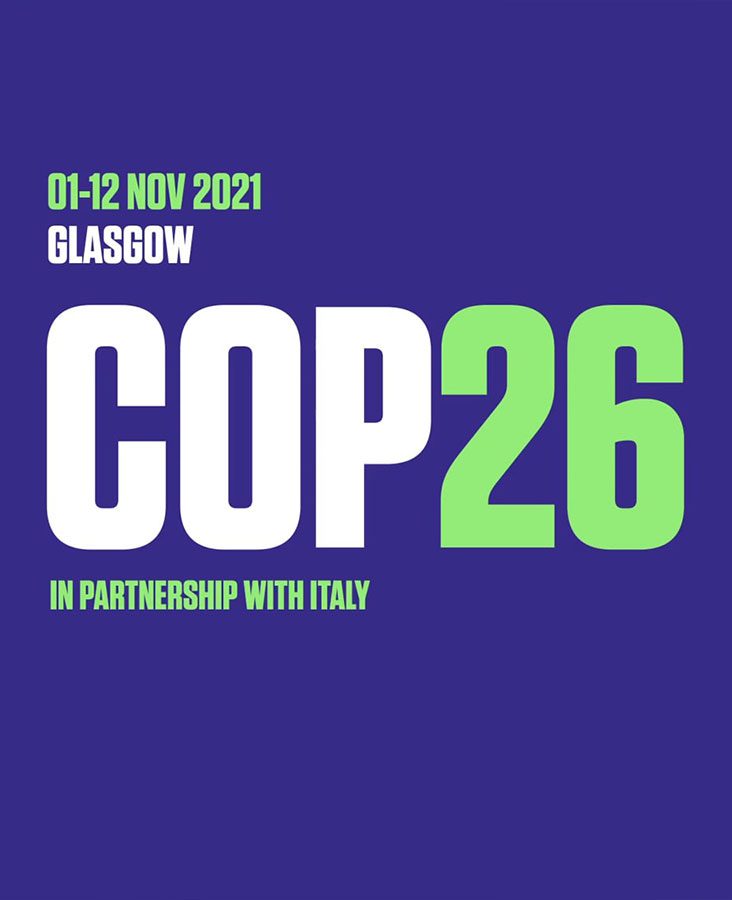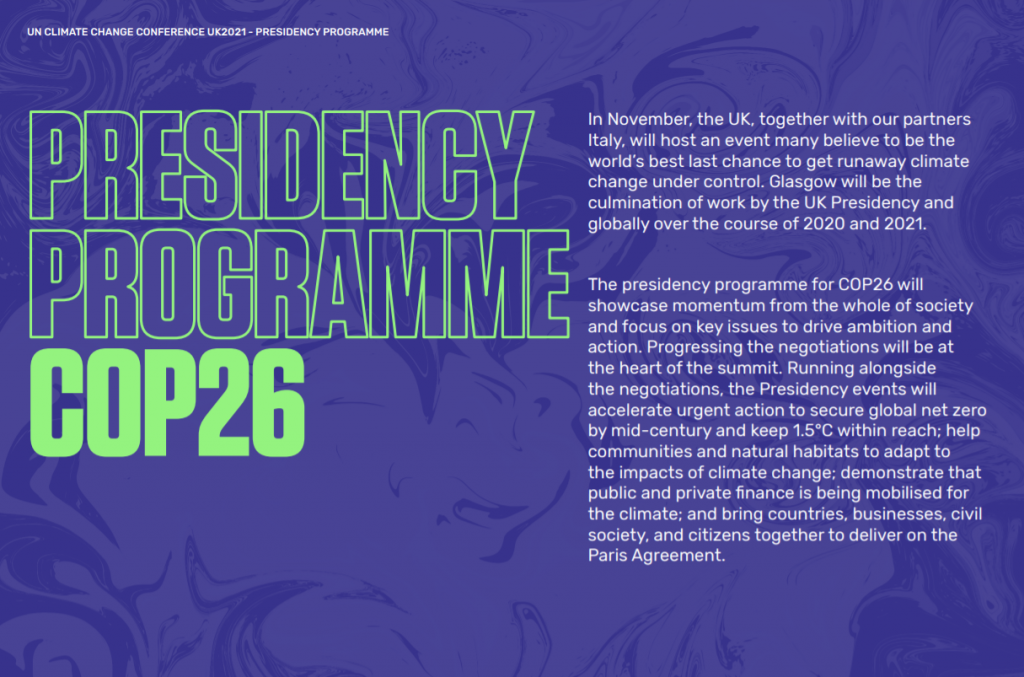What is it, what happened and why does it matter?
This article was written by Angelica Johansson as a guest blog for Climate Change Leadership at Uppsala University. Previously a student in the Climate Change Leadership course, Angelica is now a PhD Candidate working on the ERC funded project: the Politics of Climate Change Loss and Damage with the University College of London’s Political Science Department.
***
If there was one thing clear at COP26, it was that without significant and immediate mitigation measures, atmospheric greenhouse gas concentrations will be continue to rise to dangerous levels. Moreover average temperature rise to the present day has already led to irreversible impacts, beyond what we can adapt to. People living in the global South, indigenous peoples and vulnerable communities are less able to adapt to (in essence – to bounce back from) the negative climate impacts. These impacts are often manifested as droughts, floods, storms and cyclones. In the UNFCCC terminology, such catastrophic climate changes impact that push the limit of what can be adapted to are referred to as ‘loss and damage.’ Loss and Damage is understood by some as a third pillar of climate action, together with mitigation and adaptation (Roberts and Huq, 2015).
Loss and Damage was institutionalised as a policy field in the UNFCCC in 2013 through the establishment of the Warsaw International Mechanism (the WIM). Its institutionalisation was further strengthened in 2015 through the inclusion of Article 8 in the Paris Agreement, which called for averting, minimising and addressing loss and damage associated with the adverse effects of climate change (UNFCCC, 2015, p. 12). The WIM guides the implementation of Article 8 and is mandated to enhance knowledge, strengthen dialogue, as well as action and support through finance, technology and capacity building (UNFCCC, 2021a). While the work of the Executive Committee of the WIM has focused on the two first parts of its mandate, (that is, the enhancement of knowledge and the strengthening of dialogue), the progress to address loss and damage has been criticised for being too slow. For example, the Loss and Damage Youth Coalition argues that the WIM has failed to address the losses and damages in vulnerable countries and that the WIM lacks the resources to fully deliver its mandate.
At COP26, the Loss and Damage agenda focused on the operationalisation of the Santiago Network; the institutional governance of the WIM (should the WIM be governed under the UNFCCC Convention, the Paris Agreement or both?); and finally (but definitely not the least) Loss and Damage finance.
The Santiago Network was established at COP25 in 2019 and can be described as the operational arm of the WIM. As the Santiago Network is a relatively new institutional addition to the WIM, the negotiating countries used COP26 to decide what the function of the network would be. Discussions on the Santiago Network’s functions started during COP’s first week – at the same time as the World Leaders Summit (UNFCCC, 2021b). As a result, observers were excluded from the negotiation space and were left to watch the negotiation on the COP26 platform – a tool designed for observers to follow the negotiations digitally. The negotiating parties managed to agree on the functions of the Santiago Network, but unsurprisingly with some difficulty. Before an agreement was reached, parties had different preferred options on how to operationalise the Santiago Network. The negotiating block containing mainly developing countries and emerging economies, G77+China, wanted to discuss the Santiago Network’s functions and form separately, based on a logic where one first decides to go from point A to point B (i.e. the function) and then decides how to arrive at point B (i.e. the institutional set-up). While the US and EU initially wanted to discuss form and function together, the outcome ultimately reveled that whilst the functions were finalised, the institutional form of the SN will only be discussed in June at the intersessional meeting.
For many countries, particularly within the Global South, there is a lot riding on Loss and Damage negotiations and, as with many aspects of the COP processes, a strong geopolitical charge underpins these talks. During informal consultations, the spokesperson for G77+China made a notable intervention with political undertones describing the functions as a means of transport. He said that one could go by walking, biking, by tuk-tuk or SUV, and highlighted that SUV’s are a very popular car in countries like the EU and the US. He finished his intervention by suggesting that one could also use a tank and that tanks have been imported in many of G77’s countries in the Middle East. There was an audible gasp in the room as this point was made.
The second Loss and Damage item on the agenda was that of the governance of the WIM. The WIM is currently governed under the UNFCCC Convention – the COP – as well as the Paris Agreement – the CMA. At COP25 in Madrid 2019, some countries proposed that the WIM should solely be governed under the CMA. This proposition was strongly opposed by developing countries and for COP26 they asked for the governance structure to remain jointly between the COP and the CMA (PowershiftAfrica, 2021). In Glasgow, we expected this issue to be further discussed (Calliari, 2021). However, during the World Leaders Summit and the first days of the negotiations, rumours started circulating inside the venue around how ministers had decided to postpone the governance issue until COP27. These rumours proved to be founded as the CMA decision text notes that the governance issue did not reach an outcome and will be further discussed next year.
The final Loss and Damage item discussed at COP26 was that of finance. Developing countries have called for Loss and Damage finance for years (Fielder Cook et al., 2019) and it also remained a priority at this COP (PowershiftAfrica, 2021). G77+China proposed the creation of a finance facility which would provide funds and help address the losses and damages incurred as a result of negative climate impacts (Farand, 2021). The Scottish Prime Minister, Nicola Sturgeon supported the G77+China’s call for Loss and Damage finance and pledged £2m for Loss and Damage specifically in the Scottish Climate Justice Fund and called for other rich countries to follow (ScotGOV, 2021). To build up pressure for Loss and Damage finance further, a group of philanthropists committed $3m to kick-start the finance facility if the negotiating parties agreed to set it up (CIFF, 2021), and Wallonia decided to earmark €1m for Loss and Damage (TheBrusselsTimes, 2021).
Despite these efforts, the proposal did not gain traction in the plenary. Instead, the call for a ‘Glasgow Finance Facility’ faced strong opposition from the US and the EU (Weise and Mathiesen, 2021), and in the final text, the ‘Glasgow Finance Facility’ became a ‘Glasgow Dialogue’ in which negotiating parties and other stakeholders will discuss the arrangement for funding of activities to avert, minimise and address Loss and Damage. Small Island Developing States, such as the Maldives expressed fear over the dialogue being a delaying tactic (Weise and Mathiesen, 2021), where practical and financial assistance to those impacted by climate change will take even longer before it reaches those on the ground.
To conclude, while COP26 progressed the WIM through the agreement of the SN functions, its third mandate -to address loss and damage – remains under prioritised, and important funding decisions have been kicked down the line again. The Glasgow Climate Pact recognises the science and the urgency for action, yet leaves the countries responsible for causing climate change and its attributable impacts free from taking responsibility for their emissions.
References
CALLIARI, E. 2021. What is at stake for Loss and Damage at COP 26? Available from: http://www.climate-loss-damage.eu/international-negotiations/what-is-at-stake-for-loss-and-damage-at-cop-26/ [Accessed 16 November 2021].
CIFF. 2021. Philantropies Offer Kick-start Funds for Prospective Glasgow Loss & Damage Facility to Support Vulnerbale Countries Suffering From Climate Change [Online]. Online: Children’s Investment Fund Foundation. Available: https://ciff.org/news/philanthropies-offer-kick-start-funds-for-prospective-glasgow-loss-damage-facility-to-support-vulnerable-countries-suffering-from-climate-change/ [Accessed 12 November 2021].
FARAND, C. 2021. Climate reparations become a crunch issue as Cop26 goes into overtime [Online]. Online: Climate Home News. Available: https://www.climatechangenews.com/2021/11/12/climate-reparations-crunch-issue-cop26-goes-overtime/ [Accessed 12 November 2021].
FIELDER COOK, L., MENKE, I., JOHANSSON, A. & ALEKSANDROVA, M. 2019. RINGO report of the 10th meeting of the Executive Committee of the Warsaw International Mechanisms for Loss and Damage associated with Climate Change Impacts (‘ExCom 10’) [Online]. Online: RINGO. Available: https://ringosnet.wordpress.com/wim-excomm/ [Accessed 16 November 2021].
POWERSHIFTAFRICA 2021. COP 26: Delivering the Paris Agreement – A five-point pland for solidarity, fairness and prosperity. Online: Powershift Africa.
ROBERTS, E. & HUQ, S. 2015. Coming full circle: the history of loss and damage under the UNFCCC. International Journal of Global Warming, 8, 141-157.
SCOTGOV. 2021. Scotland to boost climate funding [Online]. Online: Scottish Government. Available: https://www.gov.scot/news/scotland-to-boost-climate-funding/ [Accessed 11 November 2021].
THEBRUSSELSTIMES. 2021. COP26: Wallonia earmarks one million euros for loss and damages [Online]. Online: The Brussels Times. Available: https://www.brusselstimes.com/news/193568/cop26-wallonia-earmarks-one-million-euros-for-loss-and-damages/ [Accessed 14 November 2021].
UKGOV. 2021. PM address at COP26 World Leaders Summit Opening Ceremony [Online]. Online: UK Government. Available: https://www.gov.uk/government/speeches/pm-address-at-cop26-world-leaders-summit-opening-ceremony [Accessed 08 November 2021].
UNFCCC. 2015. Paris Agreement [Online]. Online: UNFCCC. Available: https://unfccc.int/sites/default/files/english_paris_agreement.pdf [Accessed 08 November 2021].
UNFCCC. 2021a. Warsaw International Mechanism for Loss and Damage associated with Climate Change Impacts (WIM) [Online]. Online: UNFCCC. Available: https://cop23.unfccc.int/topics/adaptation-and-resilience/workstreams/loss-and-damage-ld/warsaw-international-mechanism-for-loss-and-damage-associated-with-climate-change-impacts-wim [Accessed 05 January 2021].
UNFCCC. 2021b. The World Leaders Summit at COP 26 [Online]. Online: UNFCCC. Available: https://unfccc.int/cop26/world-leaders-summit [Accessed 15 November 2021].
WEISE, Z. & MATHIESEN, K. 2021. EU, US block effort for climate disaster funding at COP26 [Online]. Online: Politico. Available: https://www.politico.eu/article/eu-us-block-financial-support-climate-change-cop26/ [Accessed 13 November 2021].









